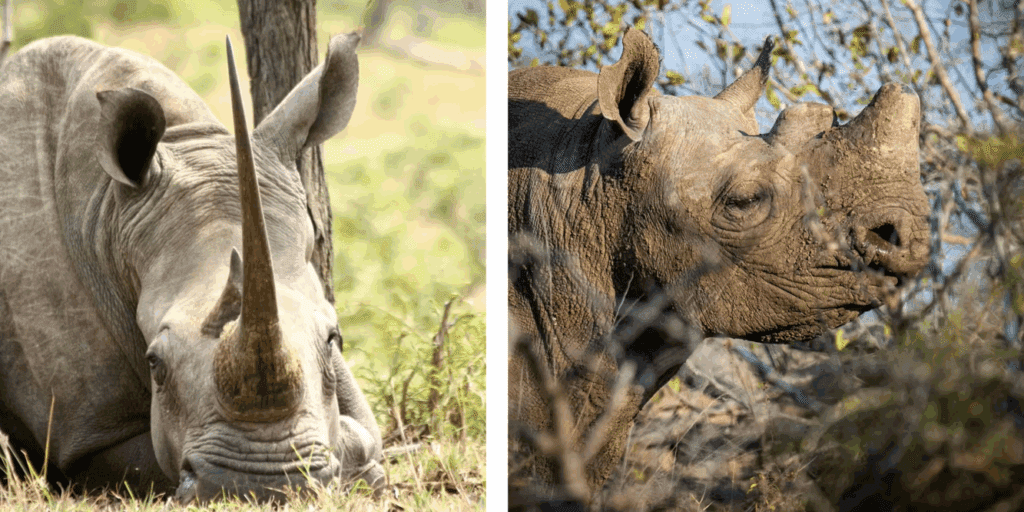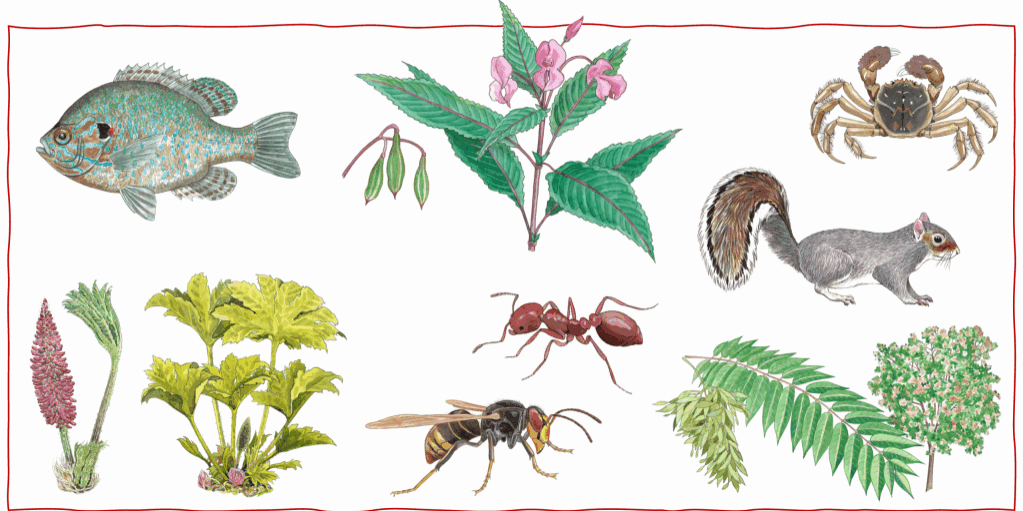From preservation to recovery: the role of nature reserves in a 21st century Wildlife Trust
Guest post by Dr Gareth Parry, Director for Nature’s Recovery, Gloucestershire Wildlife Trust

Fundamental changes are needed if ambitions to halt and reverse wildlife declines are to become more than talk. Wildlife NGO’s (Non-Governmental Organisations) are quick to hold Governments to account for failing to meet targets for tackling biodiversity declines. The most recent failure in the UK being insufficient progress against 74% of commitments to tackle biodiversity declines by 2020 [1]. However, NGO’s must also examine their own houses to avoid repeating the same mistakes and expecting different results. Efforts over the last century have slowed declines and undoubtedly saved some species from extinction, but they have not succeeded in the ultimate goal of preventing loss of wildlife. The UK conservation movement is at a crossroads, perhaps the most important one in its history, there is an ecological emergency and we might not be able to afford another ten years of wildlife declines. Using evidence to support some brave changes in strategy may be the key to turning things around.
Nature reserves were the cornerstone of 20th century conservation and they were integral to the establishment of Wildlife Trusts. As the population increased so did development and farming underwent a huge post-war intensification for food production. Nature reserves helped to save some of the most special wild places from destruction, however, many nature reserves are too small to ensure the long-term future of the species they were designated to protect. Even species that are pretty resilient to habitat fragmentation still require larger areas of high-quality habitat for their long-term survival [2]. Indeed, a study of nature reserves in Germany found that insect abundance declined by 76% between 1990 and 2011 [3]. Peer-reviewed science has long indicated that preserving the remaining wildlife rich sites is not enough to save wildlife. Ten years ago, the landmark ‘Lawton Report’ summarised this, calling for a shift in focus to increasing the size of wildlife sites (bigger), improving the quality of the habitat they contain (better) and working to connect them across landscapes (joined up) [4].
Implementation of the ‘bigger, better and more joined up’ approach has been far too slow, leading to the Wildlife Trusts calling for the creation of spatially planned ecological networks to support nature’s recovery at local and national levels. In 2018, the Government’s 25 Year Environment Plan committed to delivering ‘Nature Recovery Networks’ (NRN). At GWT we felt that we needed to heed our own advice by producing an NRN for Gloucestershire and considering whether our own estate and strategy was robust for current and future challenges. In the 21st century, wildlife organisations need a strategy that doesn’t just protect wildlife sites but enhances and expands them 5, 6], restores ecosystems [7, 8], and builds resilience to climate change [9]. These principles informed the questions that the estate review asked.
GWT quite rightly spends more money managing land for wildlife than on any other area of its work. This trust currently looks after 54 Nature Reserves at a cost of more than £1 million per year. The vital funding that makes this possible comes from members. These resources are hugely valuable, but they are not infinite, and the Trust has a duty to ensure that they make the biggest possible difference to wildlife. For this reason, in 2019 the Trust began an 18-month evidence-based review of its estate to assess whether it effectively delivers the bigger, better and more joined up approach necessary to reverse wildlife declines and build resilience.
The review consulted a wealth of primary data, peer-reviewed and grey literature, and expertise available both within the Trust and externally. The results revealed some worrying information:
- Considerable parts of the Trust’s estate were poorly aligned with the Lawton principles and the NRN.
- Only 19 nature reserves were deemed to have high or exceptional ecological value, and 41 sites were of medium or low value.
- Most sites had moderate or poor resilience to ecological isolation
- 23 sites were failing the essential criteria in GWT’s land policy – issues that either fundamentally limited a site’s ecological value or severely impeded the ability to manage them effectively.
- Sites with medium or low ecological value scores were typically costing seven times more per hectare to manage than sites with exceptional or high scores – due to their isolation from the rest of the estate, difficulty of access and increased need for staff-led high intervention management.
So how did this situation arise? The historic policy of focusing on nature reserves drove opportunistic acquisition of land. Whilst the Trust gained some fantastic reserves it also acquired reserves that were small, ecologically isolated or with relatively low ecological value. Having lots of small isolated sites spread land management resources too thinly, which impacted conservation outcomes across the estate and limited the Trust’s capacity to work with other landowners or take on new high value reserves. To provide some context, Gloucestershire has 69 wildlife SSSI’s (Sites of Special Scientific Interest) and over 1000 Local Wildlife Sites, many of which are in desperate need of assessment, better long-term management, and increased connectivity between them.
The estate review and NRN allowed GWT to identify where to create a masterplan that prioritised where to focus enhancing, expanding and connecting wildlife rich sites across the county. It also revealed where the Trust should consider withdrawing from nature reserves. The result would be an estate that is more ecologically coherent and resilient, enabling nature to not only recover but also to adapt to climate change. Diverging from a nature reserve centered approach is easier said than done. As a sector we have spent years acquiring and managing nature reserves and telling people that they are the solution, rather than being just one tool in the box. As a result, any change that affect nature reserves, even one that is evidence-based and secures better outcomes for wildlife, is a deeply emotive topic and very difficult for wildlife organisations to broach.
It is important to be clear that the case for change is supported by the evidence and driven by the desire to make a bigger difference for wildlife. Whilst the Trust does spend more than £1 million per year managing land for wildlife this currently benefits just 0.4% of the land in Gloucestershire. The Trust is committed to driving nature’s recovery in Gloucestershire and cares deeply about doing the best it can for wildlife. This required a new strategy that built larger more connected nature reserves and allocated more resources to working with farmers and landowners, who manage 74% of the land in Gloucestershire. This change also allowed more resources for collecting evidence to steer the Trust’s land management work, ensuring that we keep learning and improving.
GWT now focuses on ten larger landscape areas, based around clusters of the biggest and best nature reserves. We call these Priority Landscape Areas or our ‘wildlife cities’, which cover an area in excess of 19,000 ha. The new strategy should enable GWT to increase the area of land managed wildlife through its work from 1,000 ha to 5,000 ha within the first five years. Ultimately, we hope that the new strategy will begin restoring ecosystems, strengthening ecological networks, creating sustainable meta-populations of threatened species, and building resilience to climate change. This isn’t a small adjustment either, it will form the focus of the organisation’s land management for at least 20 years and enable greater collaboration with farmers and landowners and other wildlife organisations.
These networks do not replace nature reserves, which form a core part of the network. Nature Reserves are, and will remain, an important way by which GWT fulfils its mission. This doesn’t change the fact that GWT needed shift its focus to landscape scale working and to make this possible the Trust had to withdraw from some existing lower value nature reserves. The evidence that informed the estate review painted a clear picture but withdrawing from nature reserves is not easy. People are understandably concerned about the loss of small nature reserves near to them, even if greater benefits for wildlife can be achieved as a result. We have to remember that nature reserves have often become refuges for people as much as they have for wildlife. Investing time to engage key stakeholders and local communities, explaining decisions to them, and answering their questions is critical. The Trust has also committed to creating legacy plans for the reserves it is withdrawing from to find a solution that maintains their value as places for wildlife and people.
Fundamentally, everyone at GWT is sad to step back from some of these special places, having devoted many years of hard work to their care. However, we are in an ecological emergency and if we are to halt and reverse biodiversity declines, business as normal is not an option for GWT or any other conservation organisation. The Trust’s ambitious new landscape-scale strategy should dramatically increase the area of land managed wildlife over the next five years, helping to drive nature’s recovery in the county.
References
[1] JNCC (2019). United Kingdom’s 6th National Report to the Convention on Biological Diversity. Peterborough, UK.
[2] Lintott, P. R., Bunnefeld, N., Fuentes-Montemayor, E., Minderman, J., Blackmore, L. M., Goulson, D., & Park, K. J. (2014). Moth species richness, abundance and diversity in fragmented urban woodlands: implications for conservation and management strategies. Biodiversity and conservation, 23(11), 2875-2901.
[3] Hallmann, C. A., Sorg, M., Jongejans, E., Siepel, H., Hofland, N., Schwan, H., … & de Kroon, H. (2017). More than 75 percent decline over 27 years in total flying insect biomass in protected areas. PloS one, 12(10)
[4] Lawton, J.H., Brotherton, P.N.M., Brown, V.K., Elphick, C., Fitter, A.H., Forshaw, J., Haddow, R.W., Hilborne, S., Leafe, R.N., Mace, G.M., Southgate, M.P., Sutherland, W.J., Tew, T.E., Varley, J., & Wynne, G.R. (2010) Making Space for Nature: a review of England’s wildlife sites and ecological network. Report to Defra.
[5] Aviron, S., Herzog, F., Klaus, I., Schüpbach, B., & Jeanneret, P. (2011). Effects of wildflower strip quality, quantity, and connectivity on butterfly diversity in a Swiss arable landscape. Restoration Ecology, 19(4), 500-508.
[6] Zulka, K. P., Abensperg-Traun, M., Milasowszky, N., Bieringer, G., Gereben-Krenn, B. A., Holzinger, W., … & Zechmeister, H. (2014). Species richness in dry grassland patches of eastern Austria: A multi-taxon study on the role of local, landscape and habitat quality variables. Agriculture, Ecosystems & Environment, 182, 25-36.
[7] Tambosi, L. R., Martensen, A. C., Ribeiro, M. C., & Metzger, J. P. (2014). A framework to optimize biodiversity restoration efforts based on habitat amount and landscape connectivity. Restoration ecology, 22(2), 169-177.
[8] Timpane-Padgham, B. L., Beechie, T., & Klinger, T. (2017). A systematic review of ecological attributes that confer resilience to climate change in environmental restoration. PLoS One, 12(3).
[9] Wiens, J. A., & Bachelet, D. (2010). Matching the multiple scales of conservation with the multiple scales of climate change. Conservation Biology, 24(1), 51-62.



